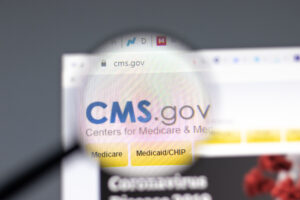By Averel B. Snyder MD, CMO, CRC, CPC, CDEO, Vatica Co-Founder and Chief Medical Officer
Driven by a flurry of lawsuits and Office of Inspector General (OIG) reports alleging billions in overpayments, government pressure is mounting for Medicare Advantage Organizations (MAOs) to improve risk adjustment practices. Before we delve into how MAOs can effectively address the increased compliance scrutiny, it’s instructive to consider how we got here.
The Evolution of Risk Adjustment
The beginnings of Medicare Advantage (also known as Medicare Part C) go back to the 1970s. At that time, beneficiaries could receive managed care through private insurance companies. It was not until 1997 that the program, then called “Medicare Choice,” became official with the passing of the Balanced Budget Act. In 2003, Medicare Part D was created, and Medicare Choice plans were renamed “Medicare Advantage” plans. A major change in the program addressed favorable selection in Medicare Advantage and was phased in from 2004 to 2007. This introduced a new system for adjusting plan payments based to a large extent on severity of illness for each beneficiary. The system requires the health plans to submit to CMS the diagnosis data annually as each member is assumed to have no diagnostic conditions at the start of a new calendar year.
The new system created an industrywide frenzy to capture all diagnoses to optimize risk adjusted revenue. This spurred new business models to help MAOs document members’ active medical conditions. These businesses include companies providing home health assessments, suspect analytics, gap closure programs, natural language processing, and machine learning to name a few. Many of these businesses focused more on increasing revenue at all costs without an equal, or greater, focus on improving the accuracy and completeness of coding and documentation. Likewise, some health plans have developed internal coding programs that lack adequate safeguards to ensure the accuracy of conditions submitted to CMS.
The Challenge Around RADV Audits
As the government increases RADV audits, warning signs indicate that industry practices may need an overhaul. For example, a recent RADV audit of Plan A revealed that only 40% of 203 sampled enrollee-years had medical records supporting the diagnosis codes submitted to CMS. For the remaining 123 enrollee-years, the diagnosis codes were not supported in the medical records. A RADV audit of Plan B found 43% of beneficiary risk scores invalid due to not supporting one or more diagnoses for the following reasons: the documentation did not support the associated diagnosis, or the diagnosis was unconfirmed. Similar reasons were responsible for the results of Plan C’s audit with only 54% of risk scores being valid.
The Problem with Retrospective Chart Reviews
The OIG released findings in a report dated December 2019 relating to supplemental diagnosis codes that were not linked to an encounter. This practice is used when submitting retrospective codes via a CMS submission in either Risk-Adjusted Processing System (RAPS) or an unlinked chart review through Encounter Data Processing System (EDPS). Of the submissions, it was found that $1.7 billion of the total $6.7 billion risk-adjusted payments were retrospective chart reviews. The OIG also found that within all chart review submissions, only 1% accounted for deletions for previous erroneous codes submitted. Regarding the supplemental unlinked chart reviews submitted, half were linked to only 10 hierarchical condition categories.
What I Learned Firsthand
I was a practicing clinical physician for 30 years before my 10-year involvement with Medicare Advantage. For 30 years, I would review the patient’s medical record prior to a face-to-face visit so that I could address those active medical conditions during the visit. I may have been more efficient, had a trained nurse or mid-level reviewed the record and presented me with all the active medical conditions, along with the documentation and clinical validation found within the medical record.
I strongly believe that had I been presented ‘lists’ composed of ‘suspect conditions’ or ‘other’ provider claims history, or lists generated by natural language processing, and machine learning, the abundance of false positive diagnoses generated by these techniques would have made me much more prone to err in documenting and coding inaccurate and non-compliant active medical conditions. On the other hand, a physician or mid-level provider responsible for patient care with access to mined data from that patient’s medical record prior to a face-to-face visit is the ideal process for Medicare risk adjustment.
What Comes Next
Due to a confluence of factors, including increased lawsuits, OIG reports claiming billions in overpayments, and negative RADV audit results. A strategy based on claims data and suspect analytics increases negative RADV exposure similar to the 40% to 50% unsupported conditions in recent RADV audits. MAOs should consider a physician-centric approach to risk adjustment, which should provide physicians with technology and expertly trained mid-level or nurse support. As a result, this will drive more accurate and complete coding and documentation to improve overall compliance and results.
###

Dr. Averel Snyder is a cardiothoracic surgeon and is board certified in general surgery, critical care medicine and cardiothoracic surgery. He practiced heart surgery for over 25 years. He also has an AMA certification in age management, and several medical coding certifications (CRC, CDEO and CPC). Dr. Snyder is co-founder of Vatica Health, the leading PCP-Centric solution for risk adjustment and quality of care. To learn more about Vatica Health, please visit vaticahealth.com











